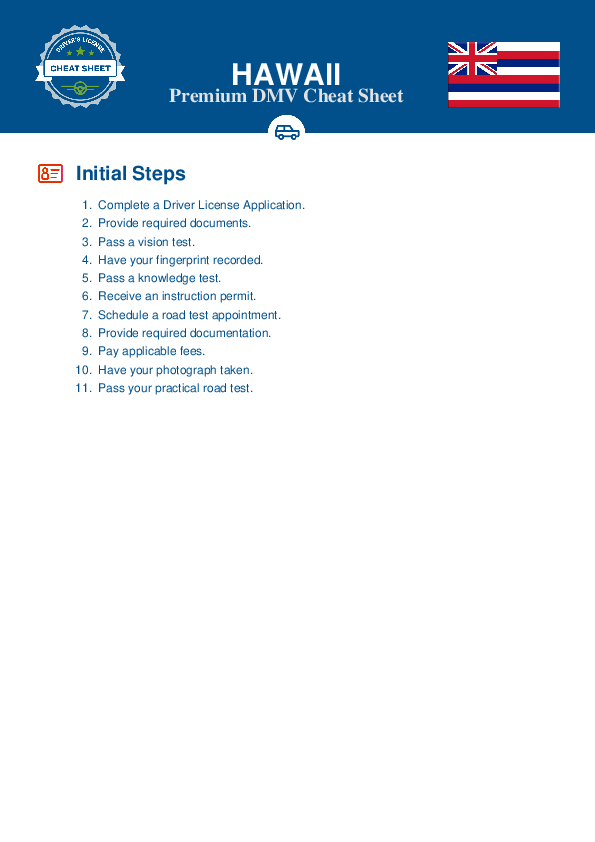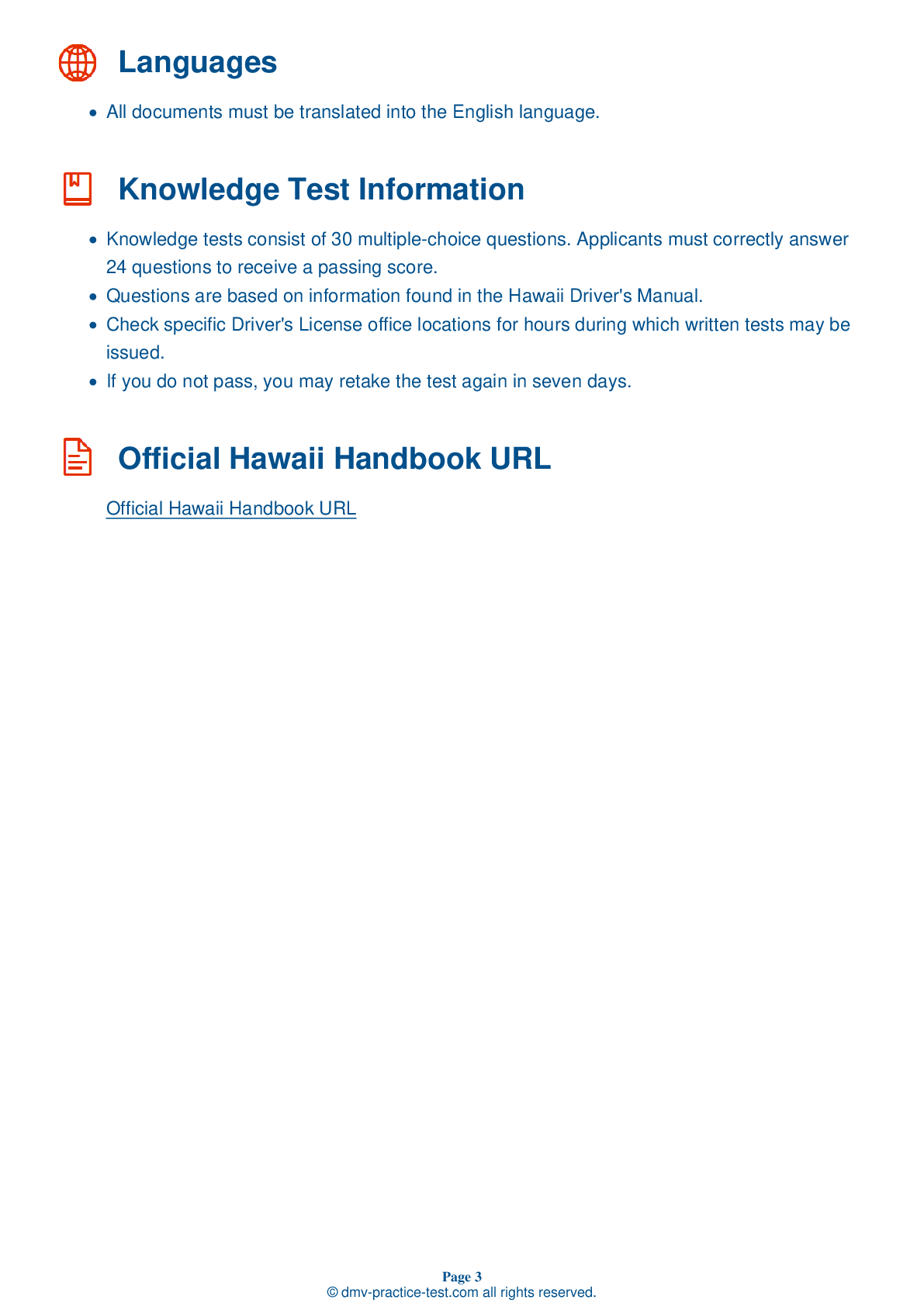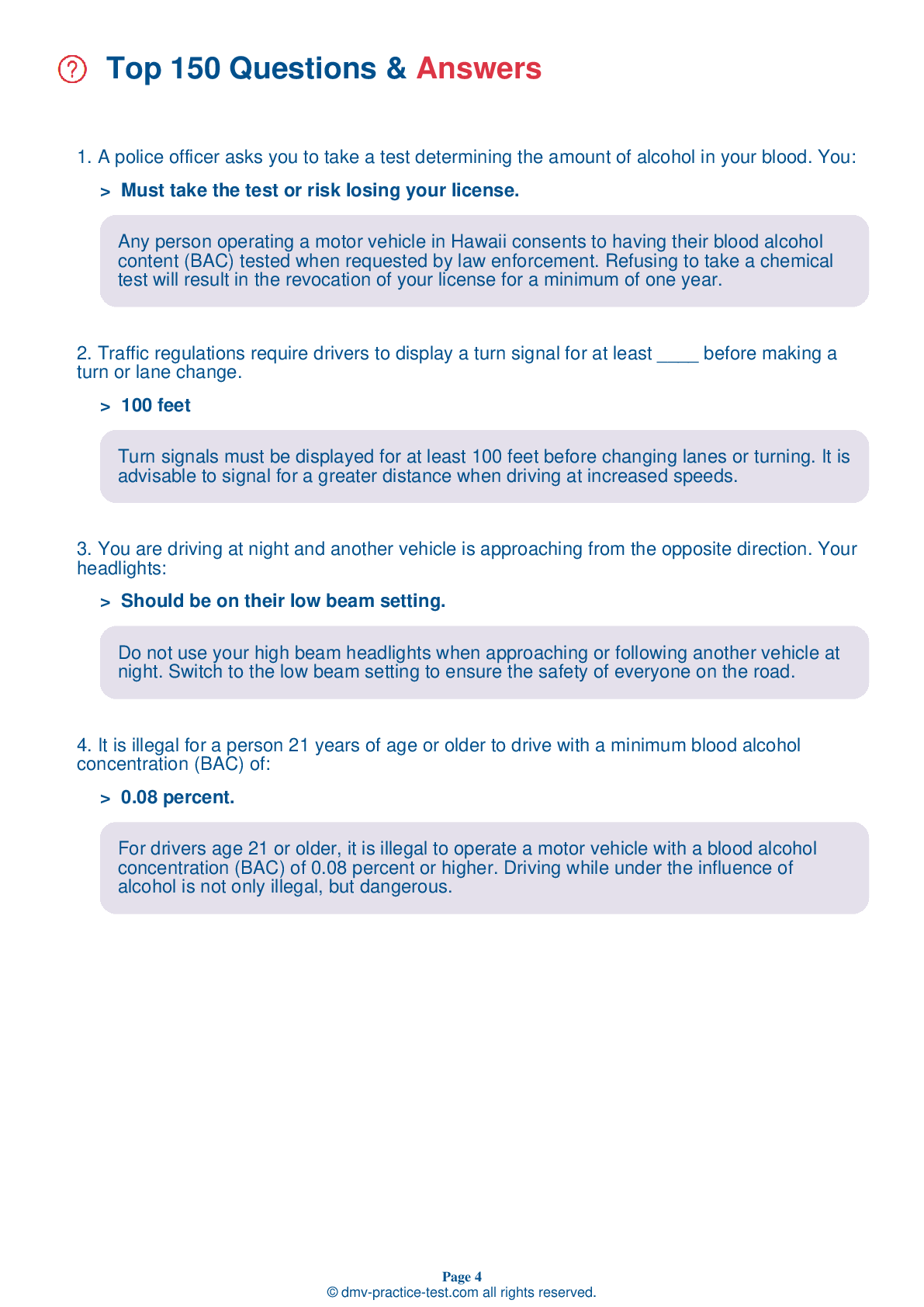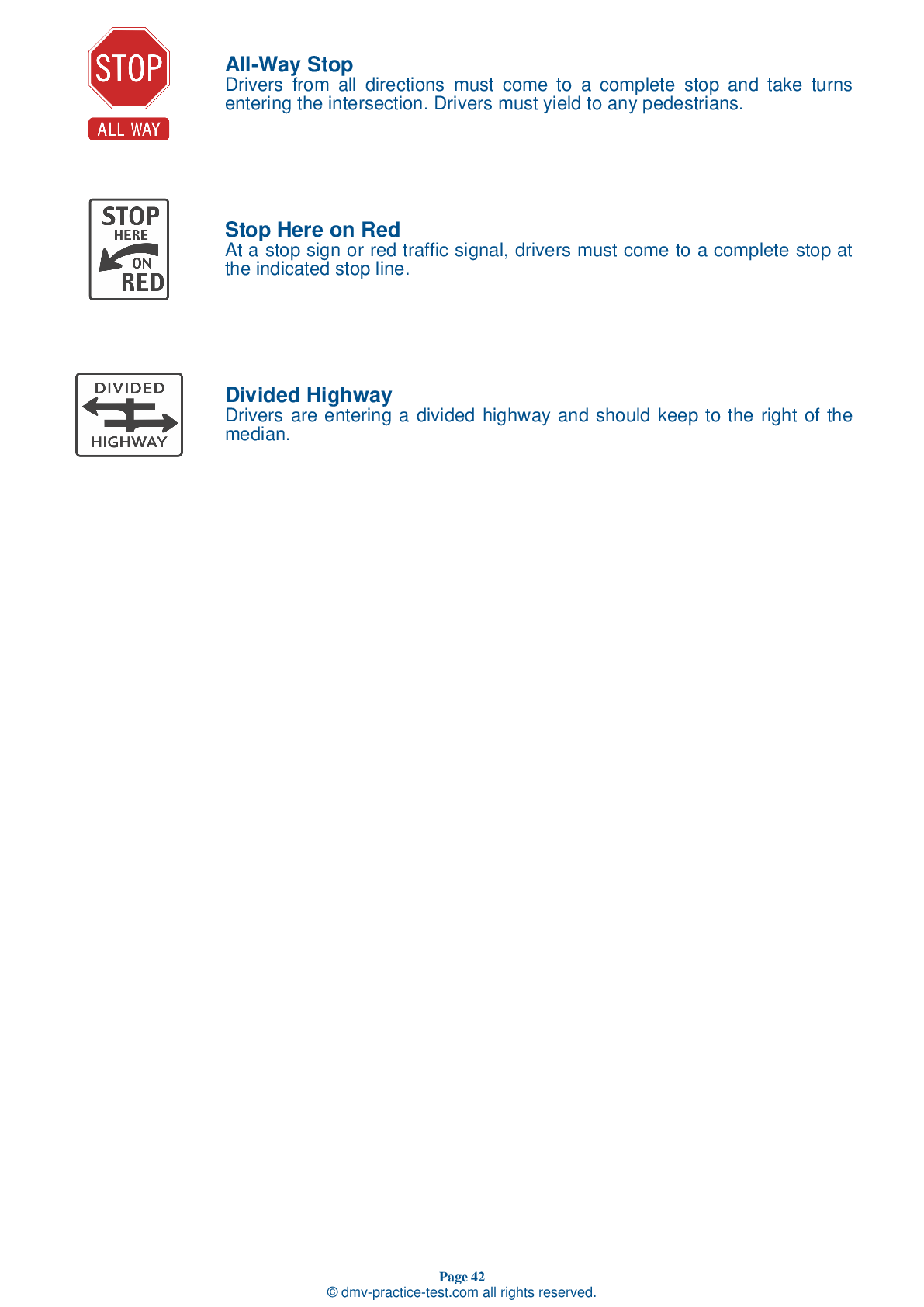FREE Hawaii DMV Practice Test | Driving License Permit test Hawaii 2025 #10
This set of practise tests for the Hawaii DMV has been updated for January 2025. It includes questions based on the most important traffic signs and legislation for 2025 from the Hawaii Driver Handbook. To study for the DMV driving permit test and driver's licence exam, use actual questions that are very similar (often identical!) to the DMV driving permit test and driver's licence exam.
Each question on the practise exam has a tip and explanation to help you recall the ideas. Questions about traffic rules, traffic signs, and driving statutes, as well as information from the Driver Handbook, will be included in the written portion of the official DMV test.
You must properly answer 24 of the 30 questions to receive a passing mark. To help you prepare for your Hawaii instruction permit or driver's licence, take our DMV practise test.
The DMV exam is offered in a variety of languages.
Using any form of testing help will result in an automatic fail, and the DMV may take further action against your driver's licence, so avoid it.
1 . At a light rail intersection, always:
You should never drive around lowered crossing gates. Always look both ways before turning across train tracks and always obey signs and traffic signals. Trains share the road with motor vehicles and bicyclists.
2 . Certain highway signs contain information about hazardous conditions. Such signs are known as:
Warning signs advise drivers of potentially hazardous conditions. For your own safety, obey warning signs. Disregarding the information provided by a warning sign may result in an accident due to your negligence.
3 . To safely pass a bicycle, you should:
When passing a bicyclist, slow down and give them as much space as you can. Bicyclists have much less protection than drivers of motor vehicles and they should not be crowded. Passing a bicycle too quickly can shift the bicyclist off-course.
4 . You are approaching a railroad crossing and you do not see or hear a train. You must stop:
You must always stop before crossing railroad tracks if flashing red lights are activated, a crossing gate is lowered, a stop sign is posted, a flagger signals you to stop, or a train is visible or so close to the crossing that it would be hazardous to continue driving. If you are unsure if a train is too close for you to safely cross the tracks, stop. Never race a train.
5 . You must not drive your vehicle at a speed greater than:
You must not drive at a speed that is faster than is reasonable and prudent. You must drive at a speed that is appropriate for the area where you are driving, the type and condition of surrounding traffic, the presence of pedestrians, the weather, the quality of the road, and light conditions. You must drive within legal speed limits.
6 . When driving on slippery roads, you should:
On slippery roads, you should increase your following distance. It may take more time to stop your vehicle than it would under normal conditions.
See the exact questions that will be on the 2025 Hawaii DMV exam.
99.2% of people who use the cheat sheet pass the FIRST TIME
LT gives us an insight on how the cheat sheet provided her with all the study questions she needed before taking her test.
Joe initially studied with the handbook and failed his test, he eventually found us online, studied and pass his test the first time around.
2025 Hawaii | Frequently Asked Questions
1. Be at least 15 1/2 years old.
2. Complete a state-approved driver's education course and receive a Certificate of Completion.
3. Visit the local DMV with a parent or guardian.
4. Bring necessary documents: proof of identity, proof of legal presence, social security number, and two proofs of Hawaii residency.
5. Pass the written knowledge test.
6. Pay the required fee.



